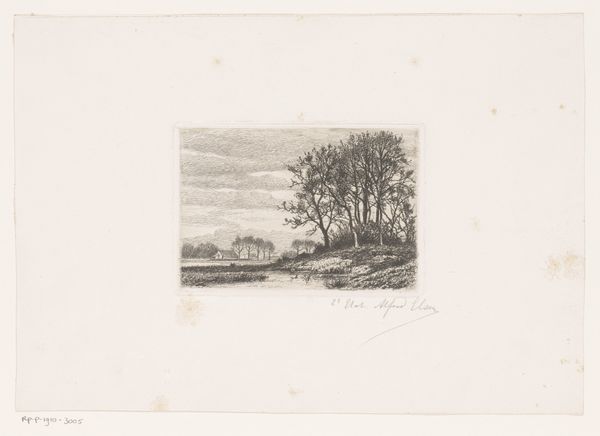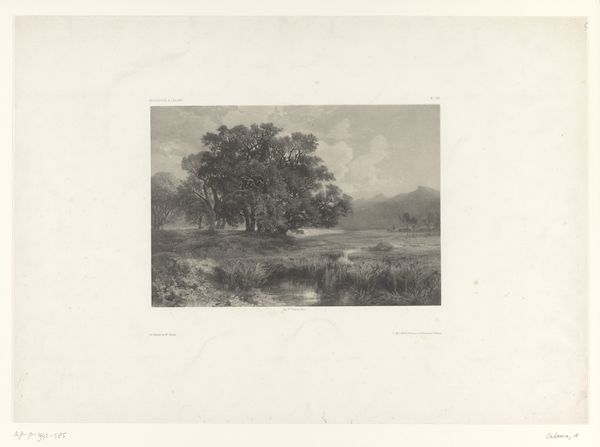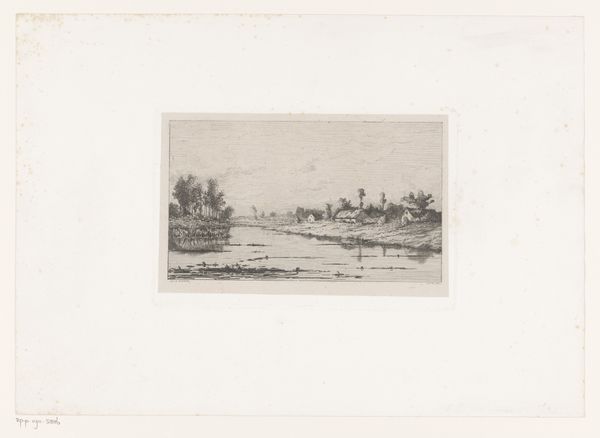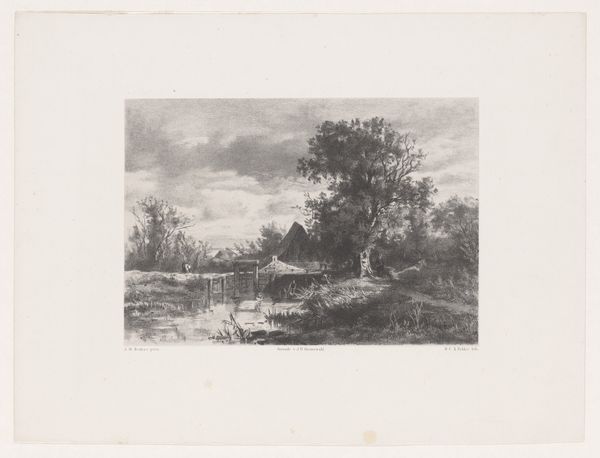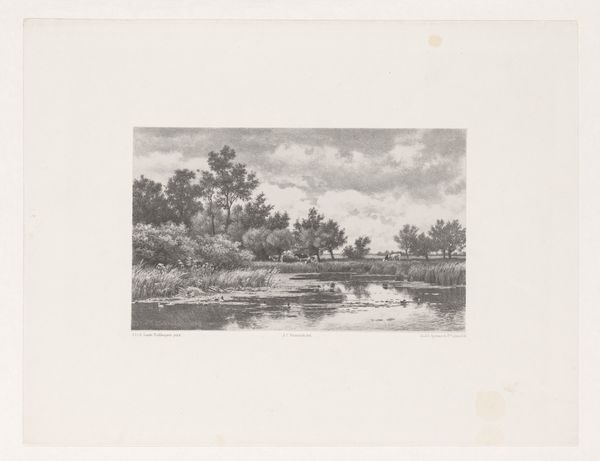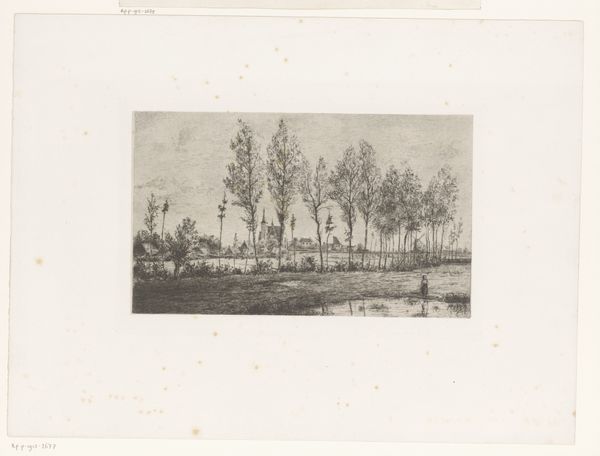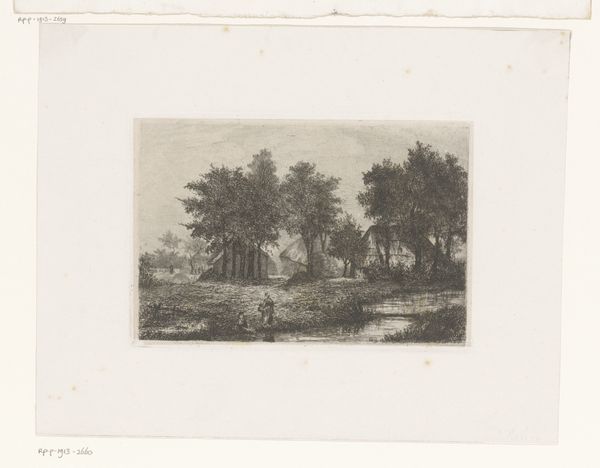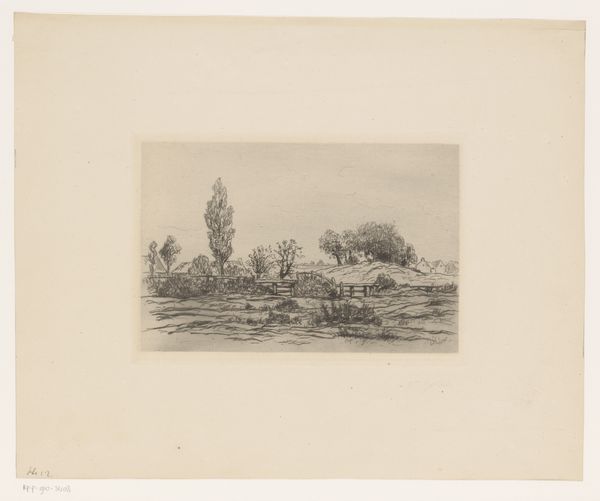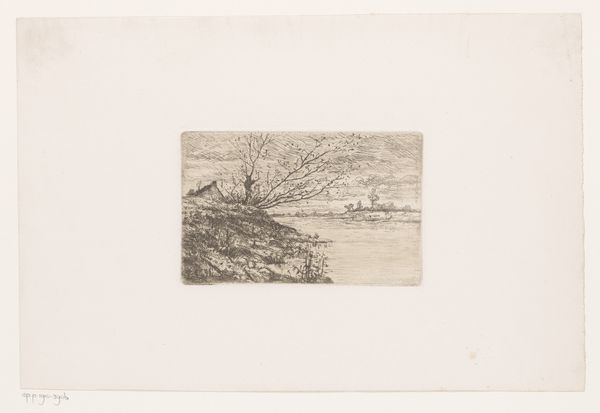
Dimensions: height 140 mm, width 211 mm
Copyright: Rijks Museum: Open Domain
Curator: Looking at this image, I am immediately struck by a profound sense of tranquility and gentle nostalgia, a whispered memory of quieter times. It's the sort of scene that makes you want to sink into a chair with a worn book, don't you think? Editor: It definitely has a very relaxing energy about it, like something seen through a softened lens. What a contrast to some of the bold statements art can make! Curator: Let's delve a bit deeper into "Bospad langs de rand van een meer," which translates to "Woodland Path Along the Edge of a Lake." It's an artwork by Joseph Edouard Van Looy, rendered in pencil before 1912. Its technique reminds me of writings about the picturesque, and its representation of landscape idealizes nature to reflect humanist values of its day. Editor: Pencil on paper... such simple materials creating this very ethereal feeling. Almost dreamlike, the way the reflections blur in the water. There’s this almost ghostly quality to the scene, softened edges… What kind of conversation might have been had in the moment the drawing came to life? Curator: I'm especially interested in how the pathway itself becomes a powerful symbol. We see traces of human interaction with nature – and these pathways, like those built within city infrastructures, enable the mobility and, more broadly, agency for communities who might not have access otherwise. The positionality and perspectives offered, and equally delimited, in landscapes such as these bear critical interrogation. Editor: A path… Yes, I am wondering what possibilities, choices, hesitations went through his mind! I suppose the drawing then can prompt the viewer to ponder their own journey. Or at the very least consider the peaceful nature the image creates as one treads through one's own path, hopefully, slowly. Curator: Indeed. And the path here doesn't just physically guide the viewer, it encourages a critical contemplation on environmental change. I’m also particularly intrigued by its muted palette; or lack thereof. Considering the time period it emerged from, this reflects a specific understanding of landscape and identity through socio-political lens, which for many are inevitably intertwined. Editor: Seeing nature interpreted this way really brings me back to some of the walks that I've done, just watching light transform through trees – and as the water moves and reflects, creating another view… I keep coming back to a state of meditation, just wanting to be more receptive with each breath I take. A good reminder amidst all the other noise happening! Curator: Absolutely, that sense of quietude is compelling, particularly within its historical context. What you mentioned resonates with its message around our relationship to the land we inhibit. Editor: It has been thought provoking connecting with an older landscape, a world that I can connect to my experience with my imagination. Thank you for pointing out those themes as well. Curator: The pleasure was all mine. Looking forward to hearing what perspectives visitors have when contemplating the scene on their own terms.
Comments
No comments
Be the first to comment and join the conversation on the ultimate creative platform.

